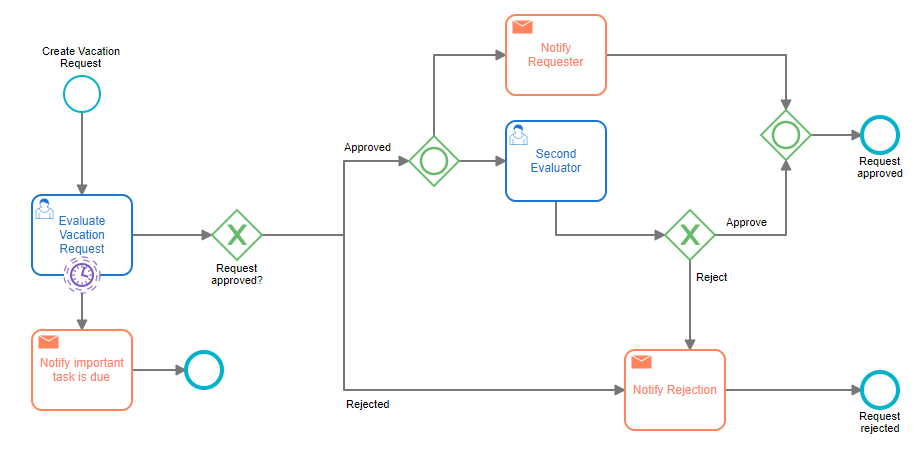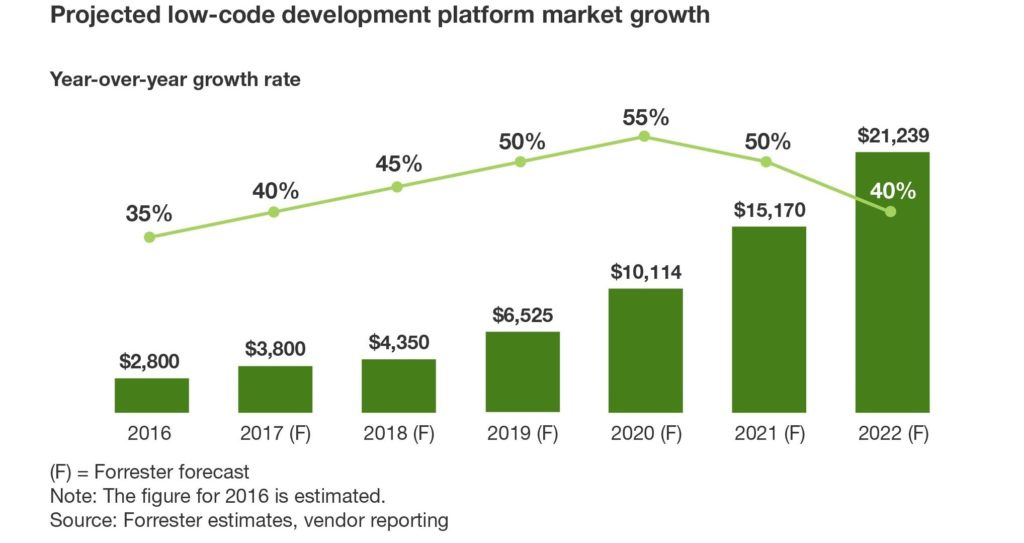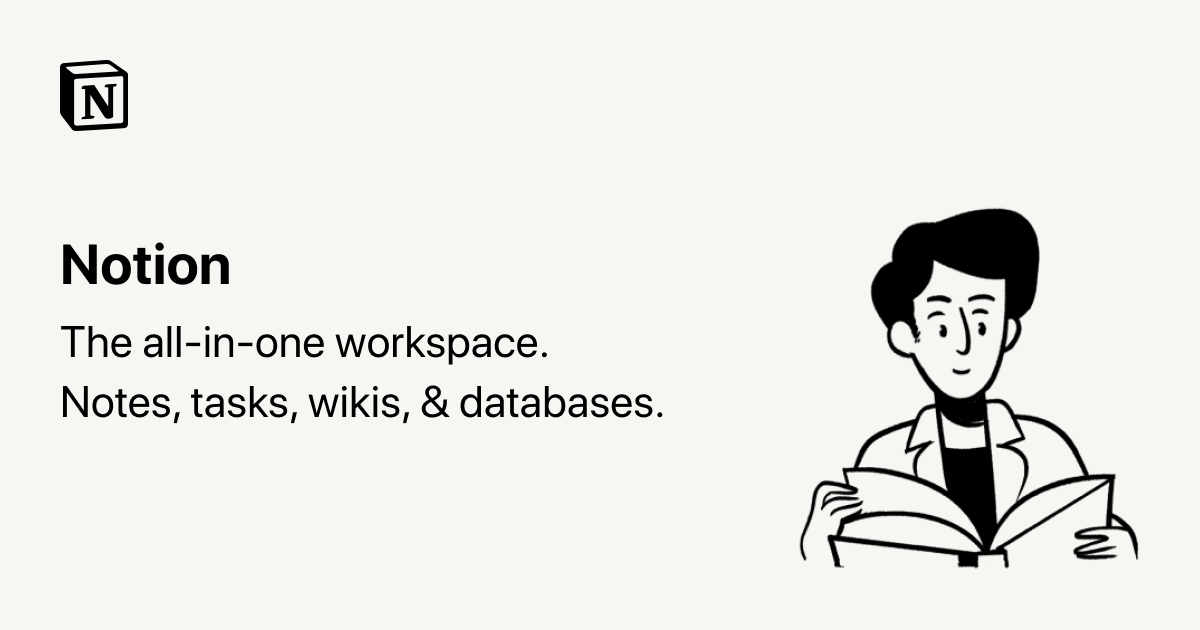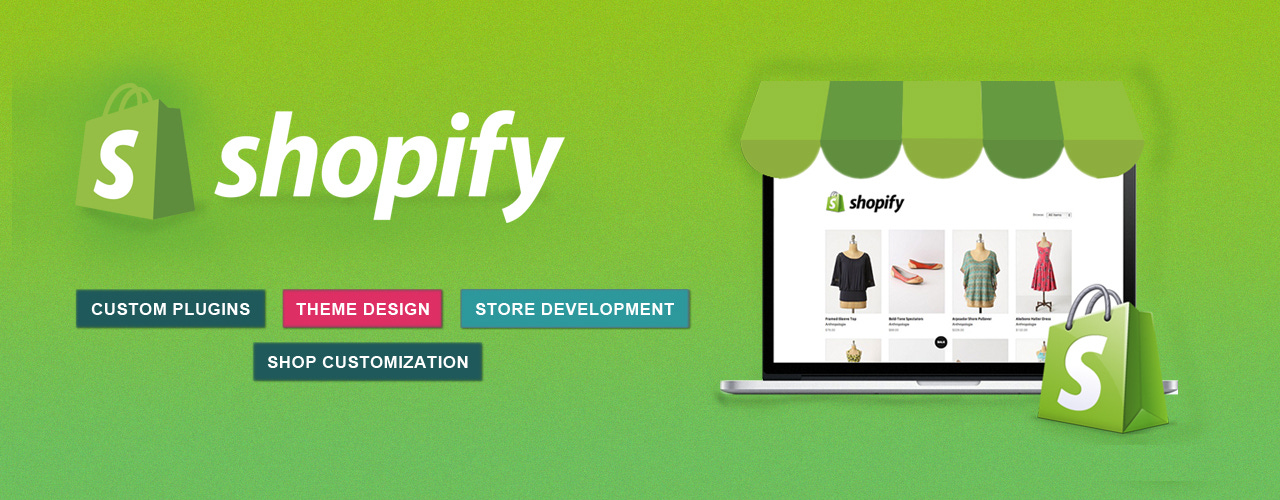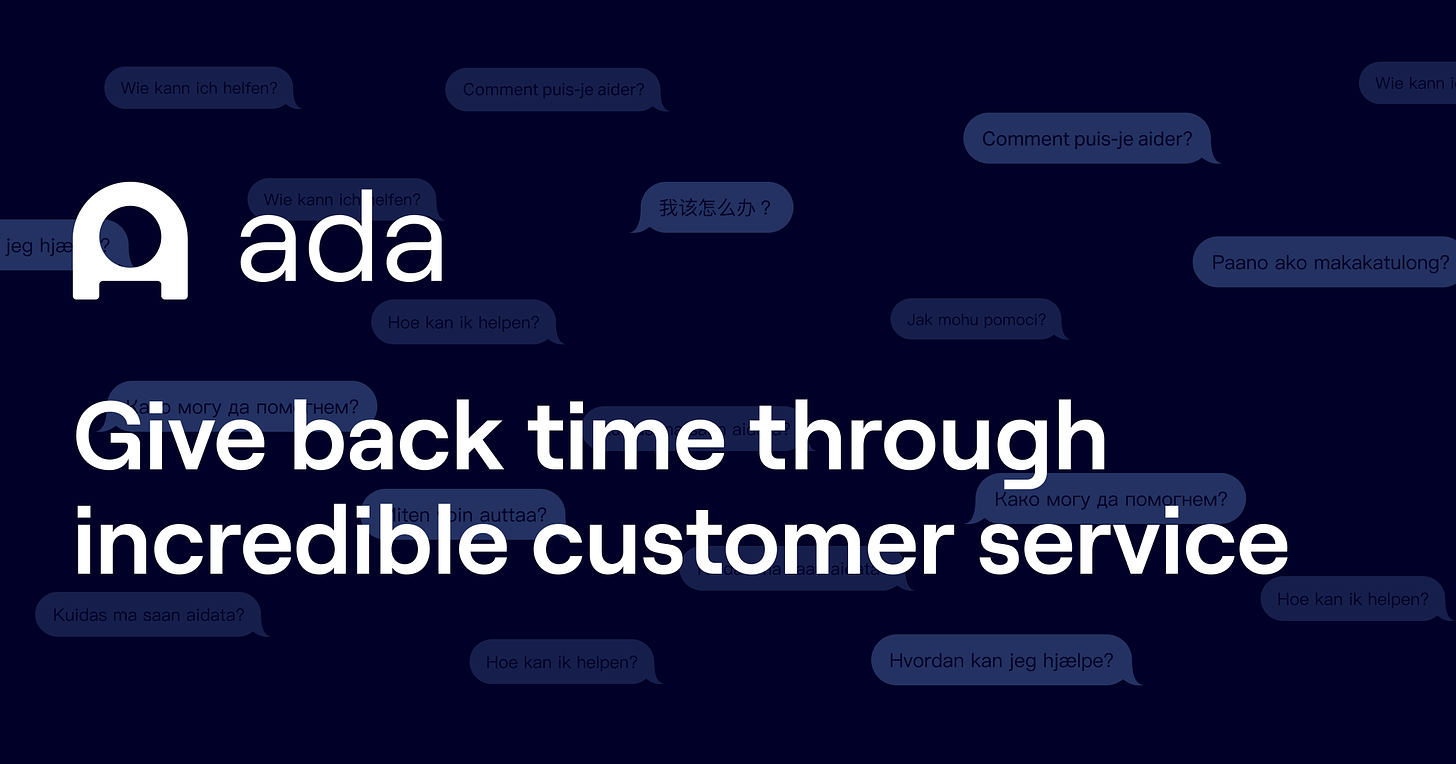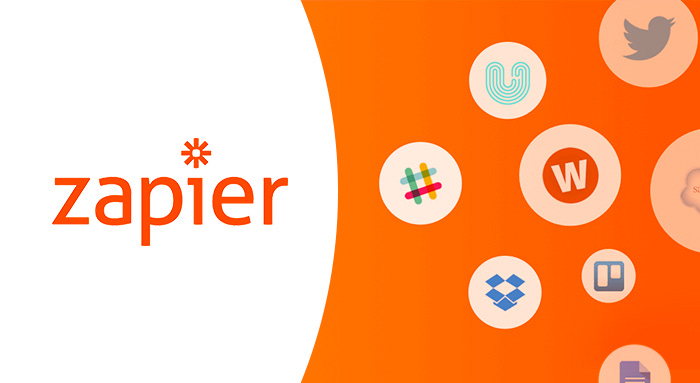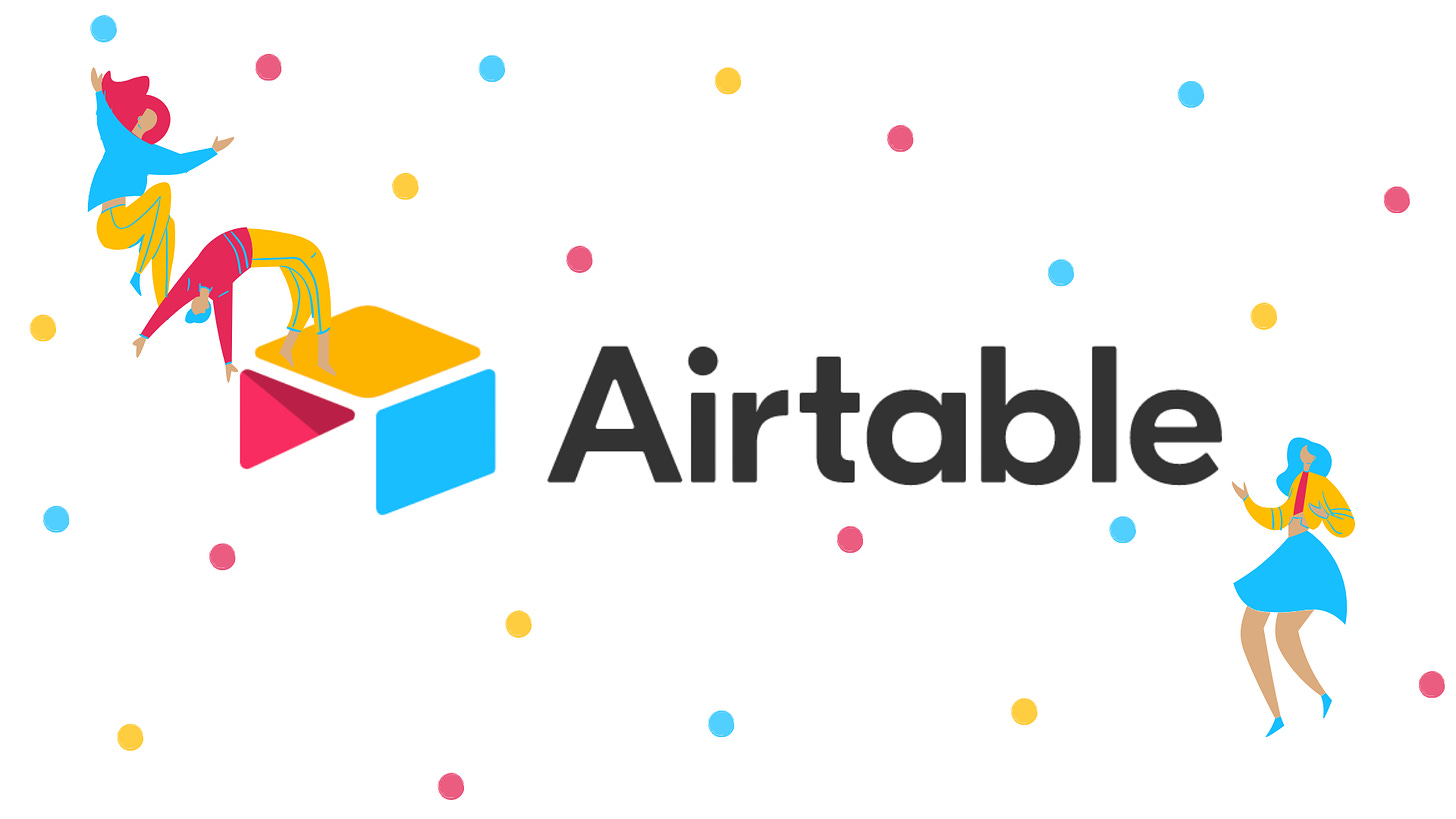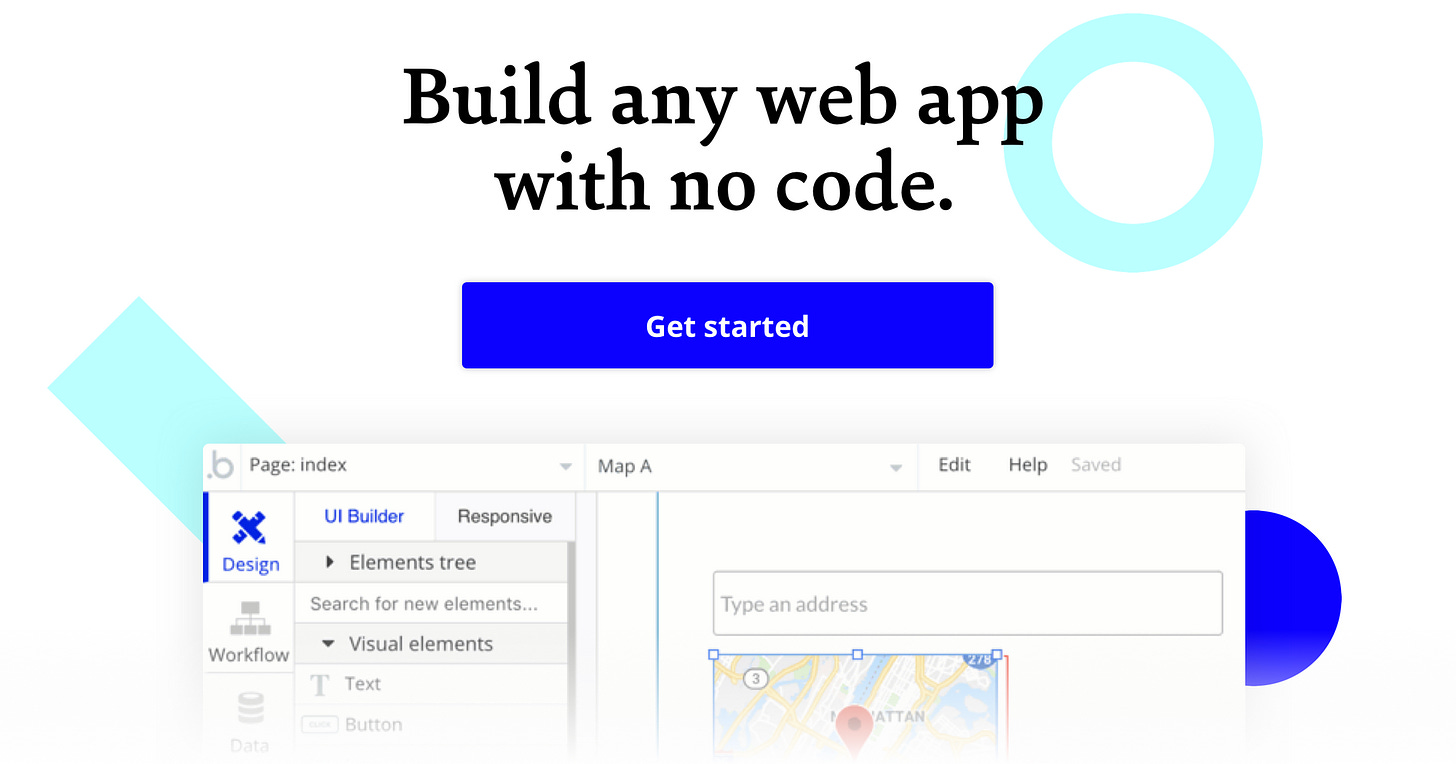Let's talk No-code & Low-code development: can this trend be explained?
Demystifying the momentum and diving into the leaders
Would you be interested to build…
A new Twitter-like platform designed with your own rules?
An e-commerce website to sell your product on a global scale?
A property management app to track, monitor and collaborate with your team?
Though you’re excited and ambitious to jump in, the development of these projects creates a bigger problem. Should you learn to code to get this project started? Where should you even begin? How long will it take for you to get started and get the project built? Well, all these questions can be easily solved and this is where innovation comes into play.
No-code/Low-code development has gained tremendous momentum in recent years and the hype can definitely be explained. The push towards these software design systems provides an accessible and user-friendly interface for anyone no matter their background to create software without writing a single line of code. Through simple features such as drag & drop or flow diagrams and virtually no access to the backend infrastructure - this method of development unlocks new doors.
This low-barrier to entry approach enables business leaders, entrepreneurs and practically anyone to take their idea into production in minutes. Whether you plan to use a template or get creative with your design, it can definitely be done. From tackling online payments, website analytics or improving your productivity, there’s a platform out there for you.
Numbers don’t lie
With all the excitement that supports this movement, the economic value directly reflects the trend.
Looking forward to 2025, it is estimated that this market will see a Compound Annual Growth Rate of 28%.
By 2024, 65% of all application development activity will sprout from low-code/no-code.
This market has seen a $2.5 billion growth between 2020-21 and projects total revenue of $21 billion by 2022.
Benefits & Challenges
What benefits come with no-code/low-code development?
Rapid development: Increased speed of development and delivery of applications.
Bridge business ideation and development: No technical background is required to create a product from start to finish.
Design and deploy: Easy and seamless user interface. Visually design platforms to adapt to the user’s objective using flowcharts, spreadsheets, etc.
Amplify Machine Learning and AI: Shadow the complexity of ML and AI to provide enhanced predictions, analyses and tools.
Reuse and externalize: Platforms are designed to provide the user with reusable templates and access data from multiple sources.
What challenges could users face using no-code/low-code?
Security: Software libraries with hidden vulnerabilities, lack of citizen developer security training and API integration.
Restricted Capabilities: Limited to the platform’s resources and software to create the product. Impossible to make further enhancements without additional support.
Shadow IT: Usage of systems, software, applications and services without IT monitoring.
Complex Use Cases: As the product continues to expand, visual flow charts/drag & drop can become too messy and developers will be required for assistance.
Who are the players in the game?
This movement in development has spurred up quite a few companies to join and become impactful leaders in their category. The shortlist below dives into a few of the best and rising:
Notion - A productivity-driven platform designed to provide an all-in-one tool for work, school, lifestyle management. With a variety of templates available including tables, kanban boards, lists, calendars and integrated third-party apps - the user experience is greatly simplified.
Valuation: $2B
Notable Investors: Index Ventures, Sequoia Capital, Sherpalo Ventures, Naval Ravikant, and more.
Shopify - An e-commerce platform that provides a variety of features and apps to enable small to midsize businesses to develop an online e-commerce presence. The platform can enable you to start your business from scratch, surround you with customizable tools, guide you through marketing & SEO, and continue to provide you with support as your store continues to scale. The backend infrastructure is simplified and you get to focus on what truly matters.
Valuation: $185.6B
Notable Investors: Georgian, OMERS Ventures and more.
Ada Support - A chatbot platform designed to empower businesses to provide an enhanced customer experience. It enables teams to leverage their AI and ML processes through an accessible interface to automatically automate the end-to-end customer experience. This has resulted in 80%+ automation rates while continuing to gain hours in productivity and millions in cost savings.
Valuation: $1.2B
Notable Investors: Spark Capital, Accel Partners, FirstMark Capital and more.
Zapier - An automation-first platform that provides you with the tools to automate and connect to web-based applications. The complexity of the tasks is hidden and the platform simply provides single-click solutions to make daily repetitive work easier.
Valuation: $5B
Notable Investors: Sequoia Capital, Steadfast Ventures, Salesforce Ventures and more.
Airtable - An upgraded database with functionalities beyond the ordinary. The platform aims to customize to your objective by providing tools to create a database, customize views (kanban, calendar, etc.), develop apps (templates included), automate reptivitive tasks and finally, effortlessly sync everything across your team.
Valuation: $5.77B
Notable Investors: Greenoaks Capital Partners, Thrive Capital, Caffeinated Capital, and more.
Bubble.io - A platform to enable you to design, develop and deploy products with a variety of functionalities to choose and no code required. It provides templates, interactive tutorials and apps to help you customize the product to your liking. From designing freely, access to a robust infrastructure, and easy integration to SEO - the sky is the limit. Imagine building Facebook or LinkedIn? Well, it’d be possible.
Valuation: $400M
Notable Investors: Tsingyuan Ventures, Caffineated Capital, Kima Ventures and more.
Resources
7 Forces Driving the Low-Code Movement — https://devops.com/7-forces-driving-the-low-code-movement/
4 Security Concers for Low-code and No-code Development — https://www.csoonline.com/article/3404216/4-security-concerns-for-low-code-and-no-code-development.html
No-code/low-code: Why you should be paying attention —https://venturebeat.com/2021/02/14/no-code-low-code-why-you-should-be-paying-attention/
Low-Code and No-Code: What’s the Difference and When to Use What? — https://www.outsystems.com/blog/posts/low-code-vs-no-code/
Magic Quadrant for Enterprise Low-Code Application Platforms — https://www.gartner.com/doc/reprints?ct=190711&id=1-1FKNU1TK
Forrester predicts significant increase in low-code platform adoption in 2021 & beyond — https://appian.com/blog/2020/forrester-predicts-significant-increase-in-low-code-platform-adoption-in-2021-andamp-beyond.html


